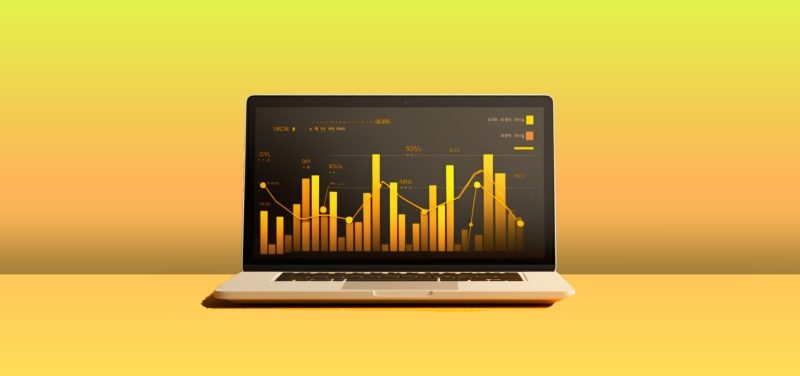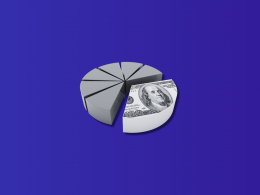Data is the biggest asset for a business today, no matter the size. But data on its own, without proper organization, segmentation, and understanding, is mostly unusable. As a business owner, if you can properly handle your business data, it can become a source of truth about your financial health, growth, and opportunities. However, it can be tricky, especially in omnichannel sales, because the more sales channels you have, the more data you need to analyze. And most importantly, you need it put together and presented in a convenient form so that you can understand what those figures are telling you. Data aggregation tremendously helps you at this point.
If you’ve just thought about data aggregation being something belonging to enterprise-level and big data, you’re in for a surprise. Businesses of any size can reap the benefits that data aggregation offers. That’s why in this article, we’ll try to explore data aggregation and how it can help you manage your business and achieve goals more efficiently.
Read on to discover:
- Aggregated data vs individual data
- Why is data aggregation important?
- How does data aggregation work?
- Types of data aggregation
- Presentation of the results
- What data can be aggregated?
2. The ways aggregation of data helps ecommerce businesses
3. How can you aggregate your business data?
What is data aggregation?
Data aggregation is a process of collecting data from multiple sources and presenting it to the end user in the form of totals or summaries. It’s a universal technique that finds its application in almost all spheres of our life. Whether it’s business, manufacturing, healthcare, public and political institutions, education, and much more – data aggregation allows you to effectively analyze large amounts of information and obtain statistical data necessary for scientific research, strategic planning, making important decisions, and so on.
Applied to business, data aggregation is typically used to create summary reports for business analysis and provide statistics necessary for better decision-making, helping achieve business objectives more efficiently. Done the right way, it can become a powerful tool to help you better understand your business in so many ways: from sales and marketing success to customer behavior and more.
Aggregated data vs individual data
Aggregated data and individual (or raw) data serve different purposes and offer different insights, depending on the context.
Aggregated data
Aggregated data is data that has been processed to combine related items. This could mean combining individual data points into groups or categories or presenting data in summary forms like averages or totals. Aggregated data can provide a higher-level overview of trends, patterns, and relationships within large amounts of data.
This makes it useful for spotting trends, making comparisons, and guiding strategy or decision-making. For example, a business might use aggregated sales data to identify seasonal trends or the impact of a marketing campaign.
Individual data
Individual data, on the other hand, is data related to single instances or events. It provides more granular, detailed information about specific items or cases. Individual data can offer rich insights when you need to understand specific behaviors, incidents, or cases. For example, individual customer data might be analyzed to understand the behavior of a single customer in great detail.
Bottom line
In a business context, both aggregated and individual data are important. Aggregated data helps in forming macro-level strategies by providing an overview of trends and patterns, while individual data is vital for micro-level analysis and understanding specific details or cases.
It’s worth noting that while individual data can provide a rich level of detail, it also carries more significant privacy concerns and may be subject to strict regulatory controls. Hence, businesses must ensure they handle and process this data ethically and responsibly.
Why is data aggregation important?
Data aggregation is a fundamental aspect of modern business operations as it empowers companies to gain meaningful insights from their raw data. By collating and presenting data in a structured and understandable manner, businesses can enhance decision-making, improve operational efficiency, optimize customer engagement strategies, manage risks, maintain regulatory compliance, and forecast future trends more accurately. All of this provides a competitive edge and contributes to the overall success of a business in today’s data-driven world.
Data aggregation is critical for businesses for several reasons.
- Better decision-making: Aggregated data can provide a comprehensive overview of business operations, customer behavior, market trends, and more. This holistic view aids in better decision-making, strategy formulation, and performance evaluation.
- Risk management: Aggregated data can help businesses identify potential risks and threats in their operation or in the market. This allows businesses to take preventative measures or prepare response strategies.
- Enhanced customer insights: By aggregating customer data, businesses can better understand their target market, identify customer needs and preferences, and create more personalized marketing campaigns. This can lead to improved customer satisfaction and loyalty.
- Operational efficiency: Data aggregation can help identify bottlenecks or inefficiencies in business operations. This information can be used to streamline processes, increase productivity, and reduce costs.
- Competitive advantage: Aggregated data can provide valuable insights into market trends, competitive landscape, and industry benchmarks. This knowledge offers a competitive edge and can help businesses adapt quickly to changing environments.
- Compliance: In industries that require regulatory compliance, aggregated data can help demonstrate that standards are being met and provide documentation for audits.
- Forecasting and trend analysis: With aggregated data, businesses can more accurately forecast future trends, demand, sales, etc., which is crucial for planning and budgeting.
Find out what data analytics in ecommerce is is and what the data analysis process looks like.
How does data aggregation work?
Let’s make a quick dive into the process of data aggregation and look at the steps it takes, such as extraction, processing (also called transformation), and presentation.
- Data extraction: Extraction is the first step at which data aggregation tools extract raw data from one or multiple sources and then put it into a data warehouse or another database or storage.
- Data processing or data transformation: Once extraction is completed, it’s followed by processing – the extracted data is processed by the tools within a database, aggregation software, or middleware. This is done to get rid of any duplicates and erroneous data. Also, at this point, various functions are applied to provide the requested result.
- Data presentation: Presentation is the final step. It’s displaying the result in a convenient and understandable form of a report, chart, or statistics.
Types of data aggregation
Based on the method and means, data aggregation falls into several types, such as time vs. spatial and manual vs. automated. Let’s break them down.
Time aggregation involves collecting data from a single source for a set period, such as a day, month, year, etc. Getting the number of monthly sales from a given sales channel can be an example of the time data aggregation type.
Spatial aggregation implies gathering data from different sources within a given period, like calculating the total number of sales across all your channels.
The difference between manual and automated aggregation is pretty straightforward. Businesses that don’t have too much data or don’t deal with many data sources might prefer to go with manual data aggregation. It can be as much as downloading reports from various platforms a company might be using and uploading them into a single dashboard for a more comprehensive view of the data. But you can imagine how time-consuming it can be. What’s more, manual data aggregation bears a high risk of accidental omission of data or other errors. That’s why automated data aggregation is a recommended option for businesses regardless of their size, as apart from saving considerable time, it provides more accurate results.
Presentation of the results
Depending on what you want to analyze and what types of results you want to receive, data aggregation tools may apply various mathematical functions when processing data, such as sum, average, or counting, etc. The most basic functions include:
- Sum: This function adds together all the specified data to receive a total.
- Average: This function calculates the average value or the central tendency of the specific data. They’re different types of central tendency depending on the type of data, namely: arithmetic mean, median, and mode.
- Max: The function identifies the highest value for each analyzed category.
- Min: This function shows the lowest value for each analyzed category.
- Count: The function counts the total number of data entries for each analyzed category.
Learn more about data dashboards.
What data can be aggregated?
Basically, you can aggregate any data that a business might need to analyze for different purposes. Some of those might include relevant insights into the current state of the business finances, assessment measures taken for strategic planning, understanding trends or patterns, and many more.
Depending on the industry and business objectives, the sources for data aggregation may include social media, users’ browsing history, customer personal data from apps or IoT devices, sales and transaction data from ecommerce and payment platforms, etc. This of course takes into account all the legal elements of accurate and lawful data collection.
In the ecommerce industry, for example, the most informative data is usually on sales, customers, and products, as it gives a comprehensive view of a business and provides valuable insights for sales, marketing teams, and management.

The ways aggregation of data helps ecommerce businesses
Let’s look at how aggregating data of various types, such as sales, customers, and products, can help ecommerce business owners increase the efficiency of managing their business and feel more confident making informed data-driven decisions.
Improve sales
Sales are the lifeblood of a business, so it’s utterly essential to have the most accurate and up-to-date information on your sales from all the sales channels and payment platforms you’re using. By knowing your numbers, you can have a comprehensive view of sales, identify the bottlenecks faster, and look for improvement.
Having an aggregated view of your sales and customer data, you can easily track your most profitable customers and products, see how price changes impact your total sales, understand your seasonality patterns and make use of them to increase your sales, and much more.
Track the efficiency of various sales channels
In the times of omnichannel business, it’s vital to carefully track the performance of your sales channels. As selling through multiple channels allows you to reach a wider audience, you need to clearly understand and be able to answer the demand of your customers from each channel. It can be tricky without having accurate numbers on sales and customer behavior across these channels.
What’s more, marketing techniques may work way differently from channel to channel. For example, if discounts work the best for your, let’s say, Amazon audience, they may have a low impact on the sales at your Shopify store (or Instagram, or any other channel).
Understand and impact customer lifetime value
Customer lifetime value (CLV) is one of the metrics you need to track to understand the profitability of your business. It tells you how much revenue an average customer generates for you during their interaction with your company. So if you want to understand and improve it, you need an aggregated view of your sales and customer data. It can give you invaluable insights into customers’ behavior, such as how often they buy or what products they buy, etc. With this data in mind, you can come up with personalized offers, up-selling or cross-selling campaigns, or loyalty programs to encourage customers to buy from you more and stay with you longer.
Plan customer acquisition and customer retention activities
Do you need to work more with existing customers to increase sales or put more effort into acquiring new ones? It’s a question you can’t answer based on mere assumptions because the wrong strategy can drastically decrease your revenue. That’s why you need to know the percentage of your new and returning customers in general and for each sales channel. And that’s where aggregating data proves more than helpful, as it gives you the answer you need based on the correct numbers from your sales channels. If you have less than 20-30% of returning customers, you may need to focus on retention (depending on the industry, of course). And with more than 50% of returning customers, you can work more on acquiring new ones.
Better understand and track changes in customer behavior
Aggregating customer data enables you to transform customer behavior into measurable numbers that help track changes, identify, and analyze specific trends or patterns in your customers’ buying habits as well as evaluate customer satisfaction. It might enable you to plan efficient customer outreach and marketing campaigns with a higher level of conversion. It can predict certain events, such as a seasonal drop in activity, help you analyze the effect of advertising campaigns, and so much more.
Manage inventory more efficiently
Inventory management can be very fruitful if you have all the necessary numbers neatly aggregated to give you a comprehensive outlook of your products on sale and in stock. It can help you evaluate the overall inventory performance, identify and minimize the risk of stock going obsolete, make more accurate demand predictions, and drastically cut carrying costs.
As you can see, data aggregation can be 360-degree useful, ensuring a better view and deeper analysis of your meaningful data to improve many parts of a business. You can’t track your most essential business KPIs and metrics without aggregating data, and all the reporting is built on this technique.
Data aggregators: How can you aggregate your business data?
The simplest example of data aggregation is writing down your numbers with a pen and paper and doing the necessary calculations manually. Frankly, it’s hard to imagine who’d want to do it this way for business analysis purposes (unless they sell, for example, a dozen hand-knitted mug cozies a month, which looks more like a hobby though). So let’s proceed with briefly looking at some more efficient data aggregation tools available for businesses.
Aggregation of data for ecommerce and SaaS
Synder Insights is a comprehensive data analysis solution that provides real-time data for strategic decision-making in ecommerce and SaaS businesses. This tool aggregates data from your ecommerce marketplaces and payment gateways allowing you to see your business as a whole as well as across all the platforms you use. Key features of Synder Insights include in-depth reports on the essential characteristics of your business such as top-performing products, top-performing customers, COGS, LTV, and many more.
With its user-friendly interface, the tool doesn’t require you to calculate anything or draw up any of the reports manually: all the numbers are ready and provided in real-time so you have access to the most up-to-date business insights.
Want to find out more about the full functionality of Synder Insights? Book a seat at our webinar.
Excel or Google Sheets data aggregation tools
Excel and Google Sheets are very good for reporting if you don’t have too much data to analyze. Their aggregation tools, Power Query and Query correspondingly, allow you to use simple functions, like Sum, Average, Count, etc., depending on the type of results you want to get. What’s particularly good about both Excel and Google Sheets, they allow for visualizing the results of your aggregated data, making your reporting even more informative.
Data aggregation with Looker Studio
Looker Studio is a more sophisticated reporting tool that allows you to work with bigger data sets from many different sources. Its aggregation methods include Sum, Average, Count, Min, Max, and Count Distinct. These aggregations can be applied not only to data sources but also to charts and calculated fields. The great benefit of working with Looker Studio is that you can create various reporting dashboards by connecting multiple data sources, so you’ll be able to track, for instance, your KPIs in one place. The tool features a number of connectors that fetch your data from multiple sources, including social media, ecommerce and payment platforms, analytical tools, and more. It also has great visualization capabilities.
Data aggregation with SQL databases
Large companies that deal with huge data sets are more likely to use an SQL database to aggregate their business data. Databases also operate with the standard aggregation methods (Sum, Average, etc.) to present the needed results. Databases allow for storing and managing terabytes or petabytes of data. However, you’ll need to maintain powerful servers and are likely to have to hire a database specialist.
Data aggregation within business software
Many business software solutions, like CRMs, ERPs, accounting, ecommerce payment platforms, etc., come with in-built reporting functionality that allows you to have an overview of business operations and performance at different levels. Such reporting tools also use data aggregation to present the results from simple totals to averages, medians, percentages, and many more. In addition to using data from internal storage, some of the solutions can pull data from external sources, which allows for a deeper analysis of various business metrics and performance indicators.
Thus, businesses may aggregate their data in many ways, depending on their purpose, capacities, and available resources.
Aggregation of data: Key takeaways
Wrapping it up, data is an invaluable business asset. However, its biggest value lies not in the data itself but in the answers it can give you about your business, sales, customers, products, brand recognition, and more.
Data aggregation is the technique that helps you get those answers. There are many ways businesses can aggregate data from different sources, from the simplest, like spreadsheets, to the most sophisticated, designed to process petabytes of business data.
If you run an ecommerce or SaaS business, Synder’s Business Insights software is a great solution. With its powerful reporting and analytics, it can aggregate data from a plethora of payment systems and ecommerce platforms, providing you with actionable insights into your sales, customers, and product performance, powering up business management and informed decision-making.







.png)
